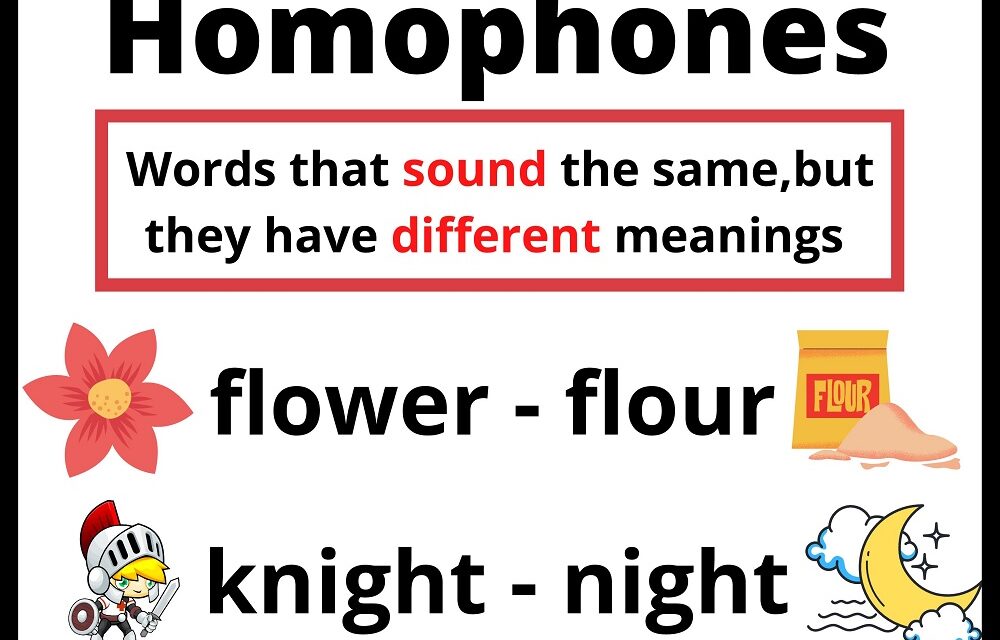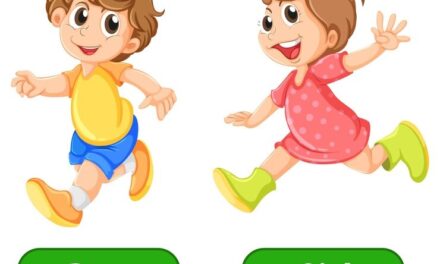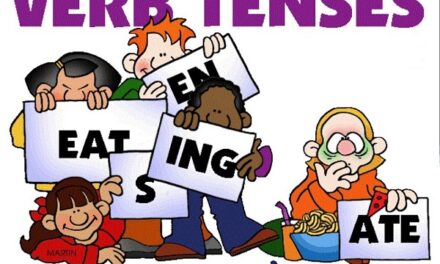What are homophones?
Homophones are words that sound exactly the same but have different spellings and meanings. Think of them as word twins that sound alike but look different and mean different things!
For example:
– “hear” (to listen to sounds) and “here” (in this place) sound the same
– “bear” (the animal) and “bare” (without covering) sound identical
– “flour” (used for baking) and “flower” (a plant with pretty petals) sound exactly alike
Why are homophones important?
Knowing about homophones helps us:
- Write correctly without mixing up similar-sounding words
- Understand what we read better
- Make our writing more interesting with wordplay
- Avoid confusion when speaking and writing
Common homophones we use every day
Let’s learn some common homophones with their meanings:
- there/their/they’re
– there: in that place
– their: belonging to them
– they’re: they are
- to/too/two
– to: towards
– too: also or excessive
– two: the number 2
- right/write
– right: correct or direction
– write: to put words on paper
- see/sea
– see: to look at
– sea: large body of water
- blue/blew
– blue: a color
– blew: past tense of blow
- made/maid
– made: created
– maid: a house helper
- hair/hare
– hair: what grows on your head
– hare: an animal like a rabbit
- wear/where
– wear: to put on clothes
– where: in what place
- pair/pear
– pair: group of two
– pear: a fruit
- one/won
– one: the number 1
– won: achieved victory
How to use homophones in sentences
Let’s see how these words work in sentences:
- “Please write your name on the right side of the paper.”
- “I can see the ships in the sea.”
- “The bear has bare feet.”
- “Their books are over there, and they’re reading them.”
- “I have two cats. They like to play too.”
The worksheets will help the child practice using common homophones in context, identify incorrect homophone usage, understand context clues, practice using multiple homophones in one sentence, develop creative writing skills, strengthen vocabulary and spelling.
Fun Activities to Practice Homophones
- Homophone Memory Game
– Make cards with matching homophones
– Turn them face down
– Find matching pairs by sound, not spelling
- Homophone Hunt
– Look through your storybooks
– Find and list homophones you discover
– Write down the page numbers where you found them
- Homophone Theater
– Act out different meanings of homophones
– For example: show the difference between “bare” and “bear”
- Homophone Art
– Draw pictures showing both meanings
– Example: draw a flower and a bag of flour
Keep practicing, and soon you’ll be a homophone expert! Remember, making mistakes is part of learning, so don’t worry if you mix them up sometimes. Just keep practicing and learning!

















